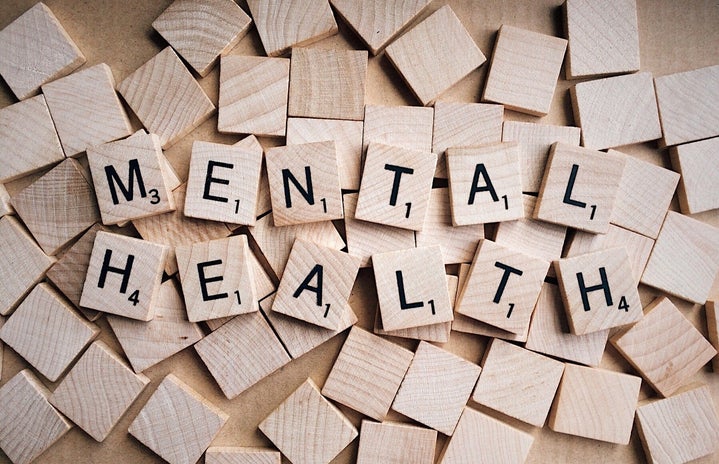The spike in mental health awareness in the last few years has opened the doors for important conversations that affect everyone. Since anyone can struggle with poor mental health, it would benefit us all to take care of our minds and understand the people around us.
However, well-intentioned online conversations have led to the misuse of some terms, which can cause people to read into innocuous behaviors that they worry might be symptomatic of a larger, scarier underlying problem.
The purpose of this article is in no way intended for self-diagnosis. If you are concerned about your mental health, the best course of action would be to reach out and seek help from a licensed professional.
Disassociation
“Sorry, I wasn’t paying attention. I dissociated for a minute.”
What it isn’t: One may zone out during class or during a conversation and feel an almost out-of-body experience. These occurrences tend to last no more than a few minutes and are not usually followed by any type of confusion or discombobulation. That is normal. Dissociation is not the same as spacing out.
What is it actually: Disassociation is the feeling of disconnect between the body and mind. Often, disassociation manifests as derealization (the persistent feeling that one’s surroundings are not real) or depersonalization (the persistent feeling that one’s self is not real). Episodes of disassociation can last anywhere from several hours to a few years.
When it’s getting bad: Zoning out from time to time is no immediate cause for concern. But if you find yourself zoning out very often, if zoning out leaves you dazed, or if you tend to zone out in places that pose a risk (e.g. while driving, handling heavy machinery, etc.), then that may be a sign that something could be wrong.
Trigger
“I’m so triggered right now.”
What it isn’t: Triggers have taken on a comical air in online spaces by becoming the common punchline in memes; this has caused the meaning of the word to be heavily distorted. The word “trigger” is most often used to express extreme dislike for something or to ridicule someone who has exhibited weakness in the form of sensitivity or vulnerability. But the common perception of triggers is a gross oversimplification of what they actually are.
What is it actually: Triggers are any kind of stimuli (visual, auditory, olfactory, etc.) that produces intensely negative sensations, often in the form of a flashback to the traumatic event or a panic attack. Subsequently, triggers are often associated with PTSD and especially with war related flashbacks. The connection between the trigger and the trauma it recalls may be fairly obvious, or it may have no clear relation.
When it’s getting bad: It’s perfectly okay if some things make you feel upset. It’s also okay to want to avoid things you know will make you upset. An issue only arises if you find yourself getting upset very often, or if you have a hard time bouncing back after a setback. One can become sensitive for plenty of reasons, especially during times of significant change; between the pandemic and university life, there have been so many periods of enormous change lately. Be patient with yourself, take a break when you need one, and remember that it’s alright to be troubled during hard times.
ADHD/ ADD
“Their ADHD makes them have so many squirrel moments.”
What it isn’t: Attention deficit disorder (with hyperactivity) or AD(H)D has been deeply misunderstood in recent years. A friend of mine who was diagnosed with ADHD at a young age told me once that “ADHD is named for the way it affects the people who have to deal with a person with ADHD, rather than for how ADHD affects the person who actually has it.” Indeed, the “can’t-sit-still-can’t-pay-attention disorder” doesn’t quite get across the reality of this disability.
What is it actually: ADHD is a neurobehavioral disorder that disrupts the normal growth and development of the brain. In fact, ADHD has several overlapping symptoms with autism. An ADHD mind requires more stimulation to feel satisfied, and so a person with ADHD will seek out stimulation by stimming, hyperfixating on interests, and even engaging in risky behavior. When understimulated, they can become restless, irritable, and tense. Because of the nature of this disability, people with ADHD face a higher likelihood of developing other complications, such as anxiety and depression.
When it’s getting bad: There are many obstacles that can make concentrating on any particular task difficult. Concentrating is especially difficult when the task is something you don’t want to do; for example, homework or studying. Setting a routine and establishing a plan at the beginning of every day can help you stay on top of things. But if even that is not enough and everything piles up because there is no way to convince yourself to sit and work, that may be a cue that you need more support.
OCD
“I can’t stand when things aren’t in their place. I have terrible OCD.”
What it isn’t: Obsessive-compulsive disorder or OCD has become heavily associated with excessive tidiness. The image of yellow gloved hands manically scrubbing an already immaculate, white surface immediately comes to mind. Moreover, the disorder is also heavily associated with a fixation on color coordination and lining things up in perfectly straight lines. But OCD is a little more complex than that.
What is it actually: The diagnostic criteria for OCD according to the DSM 5 includes obsessions which are “persistent thoughts, urges, or images” that cause distress but are suppressed by performing a compulsion. A person with OCD may believe that if they do not perform the compulsion, something bad will happen; these compulsions may have no logical connection to the event they are trying to avoid. For example, an individual with OCD might open and shut a door exactly seven times before walking into any room in order to prevent the ceiling from falling down on their head.
When it’s getting bad: Being too anal is not really an issue in and of itself. Its relation with OCD in the social conscience is more the product of the term being so misused over the years. But even so, there certainly is some connection between OCD and excessive tidiness. Compulsions can take the form of behaviors fitting the “neat-freak” stereotype: washing hands, disinfecting surfaces, cleaning one’s house from top to bottom, etc. These behaviors become problems when they’re driven by obsessions and fear that something bad will happen if they don’t follow through. A common example is a person who constantly disinfects their house because they’re convinced that their family will catch a deadly disease if they don’t. When the behavior affects one’s well-being and quality of life, then it’s time to reach out.
Multiple Personality Disorder/ DID
“I have a personality for everyone in my life! I have multiple personalities.”
What it isn’t: The disorder that was previously known as multiple personality disorder (MPD) tends to draw the attention of confused individuals who feel like they don’t fit in. These individuals may be misled by the name.
What is it actually: Mental health professionals renamed MPD to dissociative identity disorder or DID in 1994 in order to better reflect the reality of the disorder. As the name suggests, DID is a dissociative disorder that causes a split in a person’s consciousness in response to severe trauma. People with DID experience memory gaps as they shift from one personality state to another.
When is it getting bad: DID is difficult to diagnose. Symptoms must be observed to last at least several months or a full year and always results from an overwhelmingly traumatic event, such as a near-death experience, exposure to tremendous violence, or sexual abuse. But one does not need to have experienced trauma in order to feel pressure to conform. If you feel like you must change your behavior around some people as a way of appearing to be someone else, then you may be struggling with self-esteem. You can grow your self-esteem on your own through therapy and introspection. But if you feel you need more support, reach out to friends and loved ones to help you embrace your true self.
Bipolar
“My emotions switch up at the drop of a hat. I’m so bipolar.”
What it isn’t: The word bipolar is often used to connote a fickleness of emotion. So when a person switches suddenly from one emotion to another, they might say they are just “being” bipolar. But the symptoms that go with actually having bipolar disorder are beyond the sufferer’s control and regularly disrupt a person’s quality of life.
What is it actually: Bipolar disorder does indeed affect a person’s mood, but it does so in a way that makes it difficult for a person to function or carry out normal activities. The disorder causes manic episodes which are often followed by episodes of depression. A manic person may experience racing thoughts, irritability, inflated self-esteem, and sudden bouts of energy. By contrast, a person experiencing a depressive episode can suffer overwhelming apathy, fatigue, feelings of worthlessness, and suicidal ideation. These episodes may oscillate rapidly or last for months at a time.
When is it getting bad: Everyone has their ups and downs. Some days make our emotions bounce from one extreme to the other. That’s totally normal! But perhaps you feel that you are particularly sensitive and easily derailed from a normal day. Sensitivity is a beautiful quality to possess, but it should not cause reactions that are disproportionate to the situations that cause them. Though not a cause for concern, a good support system, and proper coping mechanisms may be a good place to start taking daily conflicts in stride.


